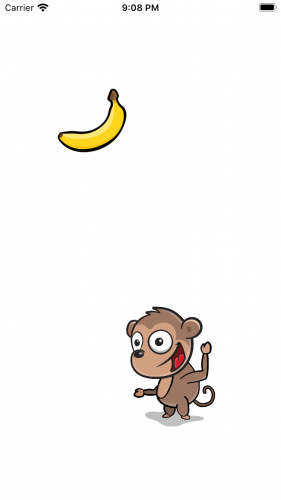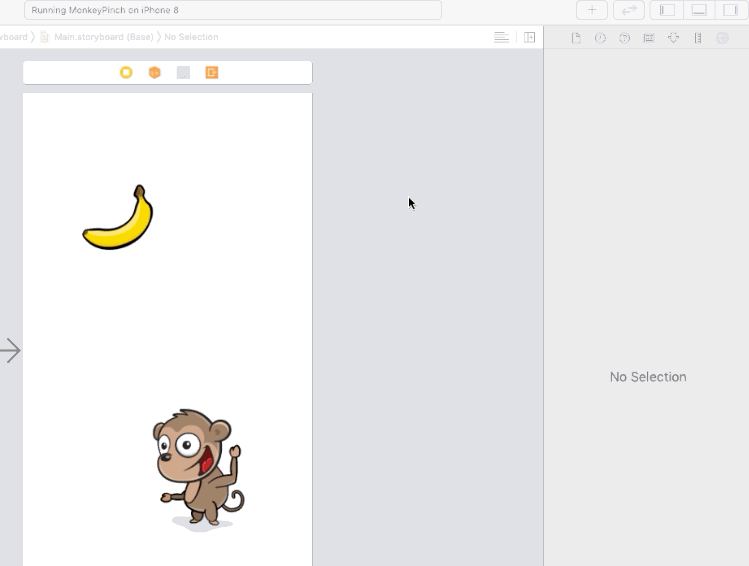UIGestureRecognizer Tutorial: Getting Started
In this tutorial, you’ll learn how to configure UIGestureRecognizer objects and how to create custom recognizers in code. By Ryan Ackermann.
Sign up/Sign in
With a free Kodeco account you can download source code, track your progress, bookmark, personalise your learner profile and more!
Create accountAlready a member of Kodeco? Sign in
Sign up/Sign in
With a free Kodeco account you can download source code, track your progress, bookmark, personalise your learner profile and more!
Create accountAlready a member of Kodeco? Sign in
Sign up/Sign in
With a free Kodeco account you can download source code, track your progress, bookmark, personalise your learner profile and more!
Create accountAlready a member of Kodeco? Sign in
Contents
UIGestureRecognizer Tutorial: Getting Started
25 mins
- Getting Started
- UIGestureRecognizer Overview
- Using the UIPanGestureRecognizer
- Implementing the Panning Gesture
- Connecting the Panning Gesture to the Recognizer
- Letting the Image Views Accept Touches
- Adding Deceleration to the Images
- Easing Out Your Animations
- Pinch and Rotation Gestures
- Implementing the Pinch and Rotation Gestures
- Simultaneous Gesture Recognizers
- Allowing Two Gestures to Happen at Once
- Programmatic UIGestureRecognizers
- Setting UIGestureRecognizer Dependencies
- Creating Custom UIGestureRecognizers
- “Tickling” the Monkey
- Managing the Gesture’s State
- Implementing Your Custom Recognizer
- Where to Go From Here?
In iOS, gestures like taps, pinches, pans or rotations are used for user input. In your app, you can react to gestures, like a tap on button, without ever thinking about how to detect them. But in case you want to use gestures on views that don’t support them, you can easily do it with the built-in UIGestureRecognizer classes.
In this tutorial, you’ll learn how to add gesture recognizers to your app, both within the storyboard editor in Xcode and programmatically.
You’ll do this by creating an app where you can move a monkey and a banana around by dragging, pinching and rotating with the help of gesture recognizers.
You’ll also try out some cool extra features like:
- Adding deceleration for movement.
- Setting dependencies between gesture recognizers.
- Creating a custom
UIGestureRecognizerso you can tickle the monkey.
This tutorial assumes you’re familiar with the basic concepts of storyboards. If you’re new to them, you may wish to check out our storyboard tutorials first.
The monkey just gave you the thumbs-up gesture, so it’s time to get started! :]
Getting Started
To get started, click the Download Materials button at the top or bottom of this tutorial. Inside the zip file, you’ll find two folders: begin and end.
Open the begin folder in Xcode, then build and run the project.
You should see the following in your device or simulator:

UIGestureRecognizer Overview
Before you get started, here’s a brief overview of why UIGestureRecognizers are so handy and how to use them.
Detecting gestures required a lot more work before UIGestureRecognizers were available. If you wanted to detect a swipe, for example, you had to register for notifications — like touchesBegan, touchesMoved and touchesEnded — on every touch in a UIView. This created subtle bugs and inconsistencies across apps because each programmer wrote slightly different code to detect those touches.
In iOS 3.0, Apple came to the rescue with UIGestureRecognizer classes. These provide a default implementation to detect common gestures like taps, pinches, rotations, swipes, pans and long presses. Using them not only saves a ton of code, but it also makes your apps work properly. Of course, you can still use the old touch notifications if your app requires them.
To use UIGestureRecognizer, perform the following steps:
- Create a gesture recognizer: When you create a gesture recognizer, you specify a target and action so the gesture recognizer can send you updates when the gesture starts, changes or ends.
- Add the gesture recognizer to a view: You associate each gesture recognizer with one, and only one, view. When a touch occurs within the bounds of that view, the gesture recognizer will check if it matches the type of touch it’s looking for. If it finds a match, it notifies the target.
You can perform these two steps programmatically, which you’ll do later in this tutorial. But it’s even easier to do with the storyboard editor, which you’ll use next.
Using the UIPanGestureRecognizer
Open Main.storyboard. Click the Plus button at the top to open the Library.
Inside the Library panel, look for the pan gesture recognizer object and drag it onto the monkey image view. This creates both the pan gesture recognizer and its association with the monkey image view:

You can verify the connection by clicking on the monkey image view, looking at the Connections inspector in View > Inspectors > Show Connections Inspector, and making sure the pan gesture recognizer is in the gestureRecognizers‘s Outlet Collection.

The begin project connected two other gesture recognizers for you: the Pinch Gesture Recognizer and Rotation Gesture Recognizer. It also connected the pan, pinch and rotation gesture recognizers to the banana image view.
So why did you associate the UIGestureRecognizer with the image view instead of the view itself?
You could connect it to the view if that makes the most sense for your project. But since you tied it to the monkey, you know that any touches are within the bounds of the monkey. If this is what you want, you’re good to go.
If you want to detect touches beyond the bounds of the image, you’ll need to add the gesture recognizer to the view itself. But note that you’ll need to write additional code to check if the user is touching within the bounds of the image itself and to react accordingly.
Now that you’ve created the pan gesture recognizer and associated it with the image view, you have to write the action so something actually happens when the pan occurs.
Implementing the Panning Gesture
Open ViewController.swift and add the following method right below viewDidLoad(), inside the ViewController:
@IBAction func handlePan(_ gesture: UIPanGestureRecognizer) {
// 1
let translation = gesture.translation(in: view)
// 2
guard let gestureView = gesture.view else {
return
}
gestureView.center = CGPoint(
x: gestureView.center.x + translation.x,
y: gestureView.center.y + translation.y
)
// 3
gesture.setTranslation(.zero, in: view)
}
The UIPanGestureRecognizer calls this method when it first detects a pan gesture, then continuously as the user continues to pan and one last time when the pan completes — usually when the user’s finger lifts.
Here’s what’s going on in this code:
- The
UIPanGestureRecognizerpasses itself as an argument to this method. You can retrieve the amount the user’s finger moved by callingtranslation(in:). You then use that amount to move the center of the monkey the same distance. - Note that instead of hard-coding the monkey image view into this method, you get a reference to the monkey image view by calling
gesture.view. This makes your code more generic so that you can re-use this same routine for the banana image view later on. - It’s important to set the translation back to zero once you finish. Otherwise, the translation will keep compounding each time and you’ll see your monkey move rapidly off the screen!
Now that this method is complete, you’ll hook it up to the UIPanGestureRecognizer.